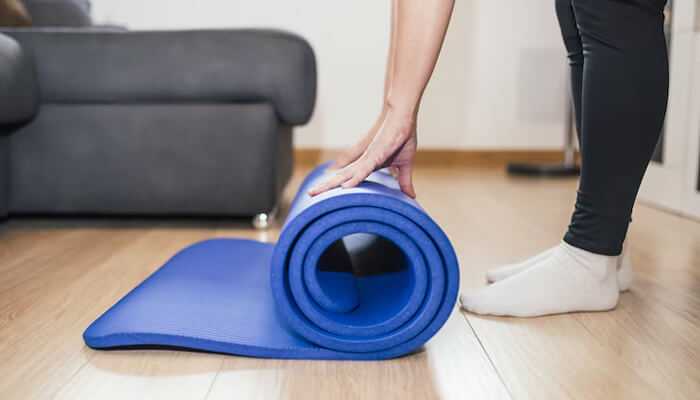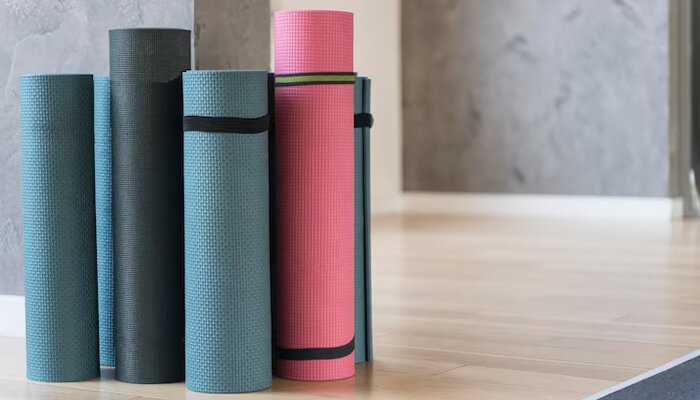When setting up a home gym or improving a commercial fitness space, one question often comes up: “What is the best thickness for a gym floor mat?” The thickness of the mat is more important than it might seem.
It plays a big role in making your workouts more comfortable, safer, and protective for your floors. Whether you’re lifting weights or doing cardio, the right gym floor mat thickness can make a big difference.
In this guide, we’ll look at what thickness you need for your gym mat, depending on the type of exercises you do and your overall gym setup.
Why the Right Gym Floor Mat Thickness Matters
Gym mats are made to protect both your floors and your body. The right thickness ensures your mat does its job properly. If your mat is too thin, it may not protect you well during intense activities. If it’s too thick, it might not offer the support or stability you need for exercises like weightlifting.
Choosing the right gym floor mat thickness is essential for getting the most out of your workouts. Whether you’re doing cardio, strength training, or yoga, picking the right exercise mat thickness will help you feel more comfortable and stay safe.
Types of Gym Mats and Their Ideal Thickness
Not all gym mats are the same, and the type of mat you choose affects how thick it should be. Here are some common types of mats and the thickness that works best for each:
1. Rubber Gym Mats
Rubber mats are tough and long-lasting. They are great for areas where heavy equipment is used or where the floor needs extra protection.
Rubber gym mats typically range in thickness from 3/8 inch to 1 inch. If you plan to lift heavy weights, go for a mat that is 1 inch thick. It will provide the necessary support to handle the impact of dropped weights.
2. Foam Mats
Foam mats are softer and more comfortable, which makes them great for activities like yoga, Pilates, or stretching.
Exercise mat thickness for foam mats is usually around 1/4 inch to 1/2 inch thick. Foam mats may not offer as much protection against heavy impacts, so they are better for low-impact exercises.
3. Puzzle Mats
Puzzle mats are commonly used in home gyms and are easy to put together. They come in various thicknesses, but most are around 1/4 inch to 1/2 inch thick.
These mats are good for general workouts, but if you need something for heavy lifting, they may not provide enough protection.
Best Thickness for Different Workouts
Different types of exercises require different levels of cushioning and support. Let’s look at the best thickness based on your workout type:
1. Weightlifting
If you’re lifting heavy weights, you’ll need a thicker mat to absorb the impact of weights dropping on the floor.
A thick gym mat of 1 inch or more is ideal. This thickness protects both your floor and the gym equipment, especially when heavy weights are involved.
2. Cardio Workouts
For cardio exercises like running, jumping, or aerobics, you’ll want a mat that offers enough cushioning to absorb the impact from these high-energy movements.
A mat thickness of 1/4 inch to 1/2 inch works well for cardio. It provides shock absorption while still offering enough stability for your feet.
3. Yoga and Pilates
When doing low-impact activities like yoga or Pilates, a thinner mat is better for balance and flexibility. A mat around 1/4 inch thick is usually sufficient for these activities, giving you the right amount of comfort without making your poses unstable.
4. General Fitness
For a mix of different exercises, a medium-thickness mat (around 1/4 inch to 1/2 inch) is a good choice. It’s versatile enough for cardio, stretching, bodyweight exercises, and more.
How to Choose the Right Thickness for Your Gym
Choosing the best gym floor mat thickness depends on several factors, such as the types of workouts you plan to do and the condition of your floor. Here are some things to think about when selecting the right mat:
1. Think About the Exercise
If you focus on strength training or weightlifting, you’ll need a thicker mat (1 inch or more). For cardio or yoga, a thinner mat (1/4 inch to 1/2 inch) will likely be enough.
2. Check Your Floor Type
The type of floor in your gym affects the thickness you’ll need. Hardwood floors, for example, may need thicker mats to protect the wood, while carpeted floors might not require as much cushioning. Thicker mats also protect the floor from dents and damage caused by heavy equipment.
3. Comfort vs Stability
If comfort is important (for exercises like stretching or floor workouts), you may want a thicker mat. But for exercises that require stability, like lifting weights or doing high-intensity workouts, a thinner mat might be a better choice.
4. Commercial vs Home Gym
For commercial gyms, which experience heavy foot traffic and intense workouts, mats that are 3/8 inch to 1 inch thick are often necessary. However, if you’re building a home gym, you may be fine with a thinner mat (1/4 inch to 1/2 inch) since your gym will see less use.
Common Mistakes to Avoid When Choosing Gym Floor Mats
Choosing the wrong thickness for your gym floor mat can lead to discomfort, safety issues, and even damage to your floor. Here are some common mistakes to avoid:
1. Choosing a mat that’s too thin: If you’re lifting heavy weights or doing high-impact exercises, a thin mat might not offer enough protection. It’s important to have a mat that absorbs the shock of dropped weights or high-intensity movements.
2. Going for a mat that’s too thick: While thicker mats provide more cushioning, they can make it harder to maintain stability, especially for activities like weightlifting. Make sure the mat thickness matches your workout needs.
3. Not considering the mat material: Different types of mats (like rubber, foam, and puzzle mats) are designed for different purposes. Make sure the mat material and thickness are right for your exercise routine.
Conclusion
Choosing the right thickness for your gym floor mat is crucial for both comfort and safety. Whether you’re lifting weights, doing cardio, or practicing yoga, the right mat will protect your floors and help you perform better.
Rubber mats are great for heavy lifting, while foam mats are better for low-impact exercises. A puzzle mat is a good option for general fitness.
Always think about the type of exercises you’ll do, the floor type, and your comfort needs when selecting your mat.
By understanding the best gym mat thickness for your needs, you can create a safer, more comfortable workout space that helps you reach your fitness goals.



